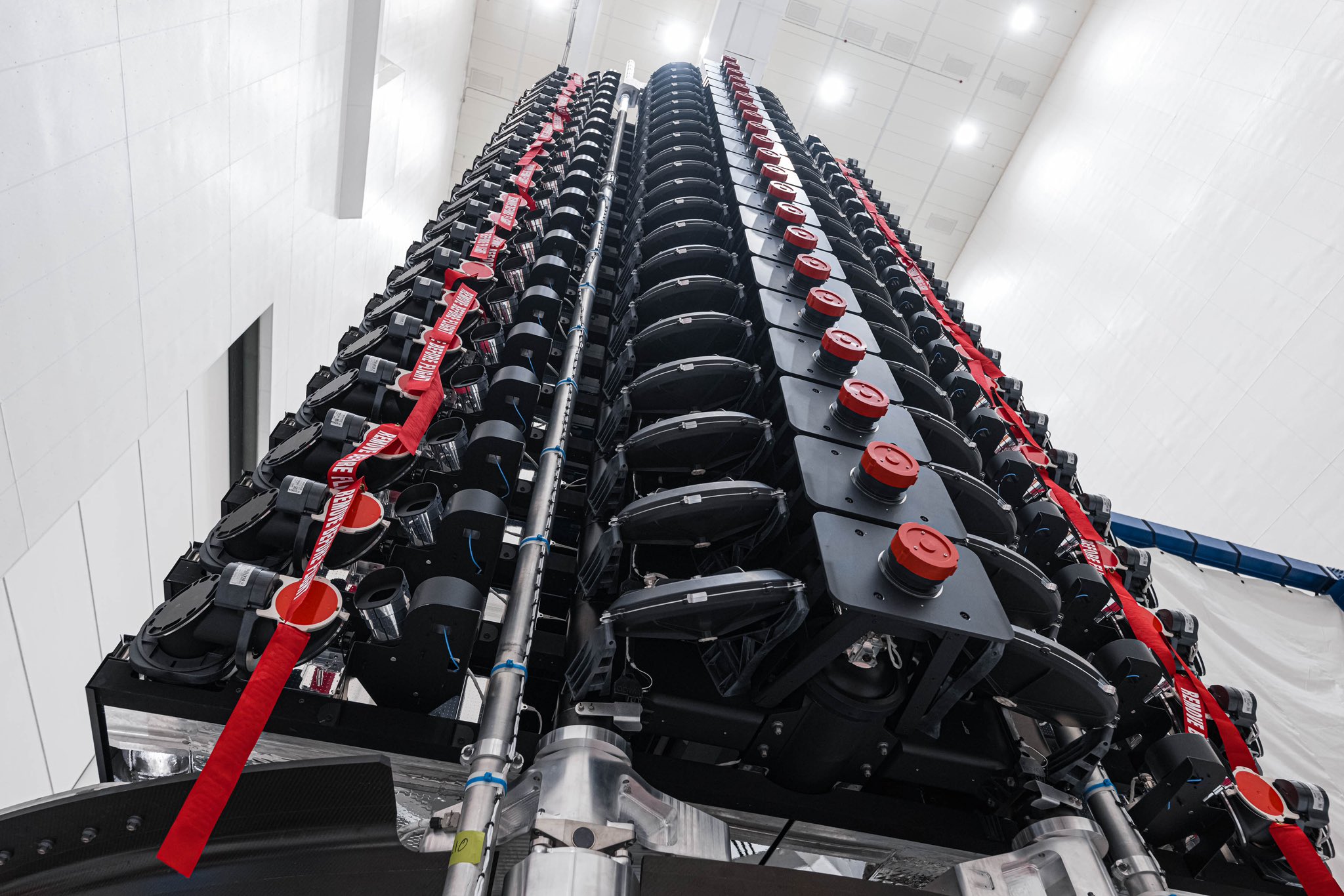Latest News

A stack of V2 Mini Starlink satellites ready for launch. Photo: SpaceX
SpaceX shared details of mini second-generation Starlink satellites on Feb. 26, calling them “V2 Minis,” saying the new technology will provide more bandwidth and increased reliability. SpaceX deployed the first round of the satellites in a Monday evening mission from Cape Canaveral, launching 21 V2 Minis to orbit.
This announcement came after the FCC recently gave SpaceX partial approval for the second generation of the constellation, approving 7,500 satellites, with additional constraints on the system. SpaceX has two versions of the second generation of satellites, the primary V2 version, designed to deploy on the upcoming Starship rocket, and a “V2 Mini” version designed for the Falcon 9.
New technologies onboard include a more powerful phased array antenna and use E-band spectrum for backhaul. The E-band development allows Starlink to provide around four times more capacity per satellite than earlier versions, SpaceX said.
In addition, the satellites have new argon Hall thrusters for on orbit maneuvering. These new thrusters were developed by SpaceX engineers and have never been operated in space before, SpaceX said. The thrusters offer 170 mN of thrust, which SpaceX said is 2.4 times the thrust and 1.5 times the specific impulse of thrusters on first generation Starlink satellites.
“With the recent authorization of our second-generation network, or ‘Gen2,’ SpaceX will provide even faster speeds to more users. This new authorization enables SpaceX to launch additional, much-improved spacecraft with significantly more throughput per satellite than the first-generation systems. For the end consumer, this means more bandwidth and increased reliability. As a result, millions of more people will have access to high-speed internet no matter where they live,” SpaceX said a statement.
SpaceX also shared updates on the sustainability of the system, saying the satellites are designed to fully degrade when they reenter the atmosphere to eliminate the risk of falling debris, and decommissioned satellites are propulsively deorbited within weeks of the end of their mission. The operator also said V2 Mini satellites will be darker in orbit than the first generation to further reduce the impact to astronomers and their observations.
Starlink is a constellation of satellites in Low-Earth Orbit (LEO) that provides broadband internet service in areas where terrestrial options are unavailable or lacking. The service is available in many parts of the world and recently surpassed 1 million subscribers. SpaceX said in the update that it has launched nearly 4,000 satellites for the constellation, and independent tracking reports there are more than 3,683 satellites in operation in the constellation.
Get the latest Via Satellite news!
Subscribe Now